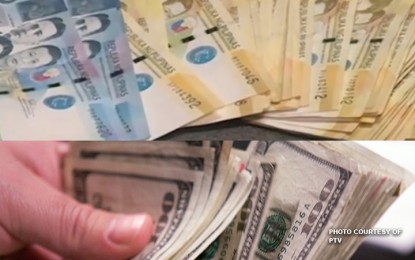
(PNA file photo)
MANILA – Economists are divided on the next moves of the Bangko Sentral ng Pilipinas (BSP), with some saying hikes are still vis-à-vis the rate decisions of the Federal Reserve.
On Thursday, the BSP’s policy-making Monetary Board kept the central bank’s key rates steady for the second consecutive rate setting meet on the forecast that inflation would continue to decelerate and with the monthly rate seen to return to within the government’s 2 percent to 4 percent target band as early as September this year.
Thus, the central bank’s overnight deposit rate remains at 5.75 percent, the overnight reverse repurchase (RRP) rate at 6.25 percent, and the overnight lending rate at 6.75 percent.
In a research note, Hongkong and Shanghai Banking Corp. (HSBC) economist for the Association of Southeast Asian Nations (ASEAN) Aris Dacanay said the Federal Reserve’s decision to keep its target rate during the meeting of the Federal Open Market Committee (FOMC) steady at between 5 percent and 5.25 percent earlier this month gave the BSP time to assess its own stance “while maintaining a slightly hawkish tone.”
Dacanay, however, noted that Philippine monetary authorities kept their “hawkish stance for defensive purposes as risks to the policy rate outlook remain tilted to the upside.”
“We still expect the BSP to keep the policy rate steady at 6.25 percent until 3Q (third quarter) 2024. In the near term, we expect the BSP to stand pat even if the Fed raises its policy rate by 25 basis points (from 5.25 percent to 5.50 percent) in July, thus, narrowing the yield differential between the BSP and the Fed rates to 75-100 bps,” he said.
Dacanay noted that “there is less pressure” for the local central bank to keep the interest rate differential with the Fed “since the US dollar is already less strong than before.”
In addition, he said, the BSP has been able to raise its foreign exchange (FX) reserves since the fourth quarter of 2022, thus, adding to its capability to stabilize the Philippine peso as needed.
Nonetheless, Dacanay also pointed out that “big risks to the policy rate outlook would emerge if the Fed hikes more than expected and the yield differential narrows even further.”
Meanwhile, the Ayala-led Bank of the Philippine Islands (BPI) still sees one to two more hikes in the BSP’s key rates in the latter part of this year, “depending on how the FX market will react in case the Fed hikes again.”
The BPI research note said currently, the interest rate differential is 100 bps but could narrow to 50 basis points if the BSP keeps on maintaining its key rates.
“The BSP may hike again if the FX market becomes volatile given the narrower interest rate differential,” it said.
It also dubbed as “too premature” any cut in the BSP rates this year, noting that “with the Fed still keeping its hawkish stance, it might be difficult to cut rates while minimizing the impact on the currency.”
The BPI said while the Philippines’ trade and current account deficit remains wide, there is still a tendency for the local currency to weaken against the greenback, especially if the interest rate differential between the US and the Philippines narrows.
“Moreover, lower interest rates may fuel the expansion of imports due to higher demand, which could further bloat the trade deficit,” it said.
It forecast the peso to move sideways due largely to the Fed decisions but said the strength of the US dollar might diminish if the Fed pauses more quickly to cut rates earlier than expected, which in turn would boost the peso and other emerging market currencies.
“But in this situation, the appreciation of the local currency will likely be smaller compared to other currencies given the still substantial current account deficit of the Philippines this year and in 2024,” it added.
Relatively, Rizal Commercial Banking Corp. (RCBC) chief economist Michael Ricafort said the BSP is seen to follow any Fed rate cuts, although the possibility that this would materialize in the latter part of this year is low.
Local policy rates would still be largely a function of future Fed rate moves (pause, hike, or cut) as well, fundamentally, the local inflation trend, and the behavior of the peso exchange rate, which affects import prices and overall inflation,” Ricafort said.
“Thus, the timeliness and size of any future local policy rate moves (hike, pause, or cut) would also be a function of the behavior of peso exchange rate, given its impact on import prices and overall inflation. So, if the peso exchange rate is relatively stable, any future local policy rate adjustments would just match any future Fed rate moves in the coming months.” (PNA)
